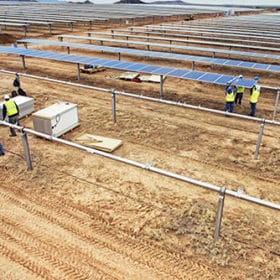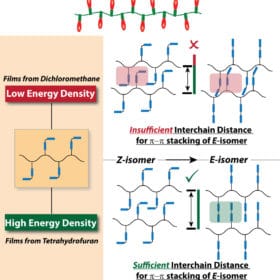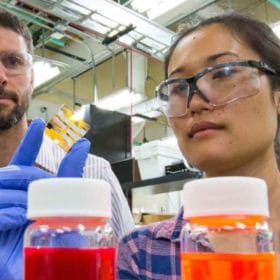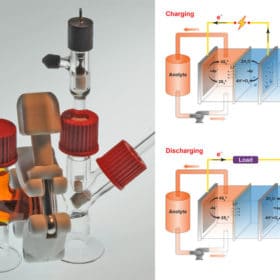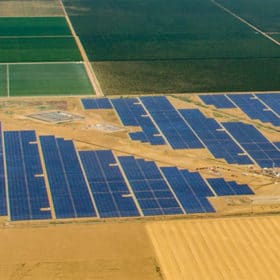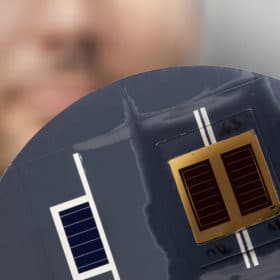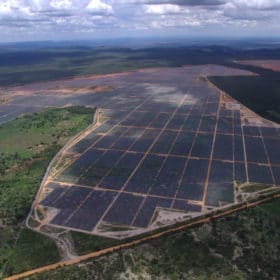TÜV Rheinland: Centralized tracker architecture can reduce LCOE
A report published by TÜV Rheinland, which was commissioned by tracker manufacturer Array Technologies, shows that centralized tracker systems such as those offered by Array Technologies offer an LCOE advantage over other, decentralized system architectures.
UMass scientists boost polymer-chain storage efficiency
A team from the University of Massachusetts, Amherst (UMass) have developed a polymer based energy storage system, which releases energy on demand as heat. The scientists say that their system utilizes a polymer chain ‘organized like a string of Christmas lights’ and can achieve more than double the storage density of previous polymer based systems.
NREL hits new efficiency record for quantum dot cell
Scientists at the U.S. Department of Energy’s National Renewable Energy Laboratory (NREL) have created a solar cell using colloidal quantum dots, which achieved 13.4% conversion efficiency – a new world record for this emerging technology.
Berkeley scientists boost battery capacities
Scientists at the U.S. Department of Energy’s Lawrence Berkeley National Laboratory have made progress with cathodes made from ‘disordered’ materials, a technology which could greatly increase the storage capacity of lithium batteries.
REC Silicon sees 38% sales increase in Q3
Leading polysilicon producer REC Silicon posted revenue of $75.5 million in the third quarter – 23% above the previous quarter. REC saw a 38% increase in sales volume, despite polysilicon production for the quarter coming in slightly below guidance.
Microlink partners with NREL on heterojunction technology
Semiconductor maker Microlink Devices has signed an exclusive deal with the national lab to commercialize a type of lightweight heterojunction solar cell architecture, which could be utilized in powering satellites and aircraft.
MIT researchers develop ‘air breathing’ sulfur flow battery
A team at Massachusetts Institute of Technology has developed a type of battery which it says could store energy for long durations at a fraction of the cost of current storage technologies.
Canadian Solar subsidiary Recurrent Energy signs deal for 100 MW project
Recurrent Energy, a wholly owned subsidiary of heavyweight module manufacturer Canadian Solar has signed power purchase agreement for a 100 MW PV project to be located in Kings County, Central California.
NREL, Swiss researchers break 35% cell efficiency
A collaborative project between the U.S. Department of Energy’s National Renewable Energy Laboratories and researchers from two Swiss centers has tested a range of multi junction cells in tandem configuration, and achieved efficiencies of up to 35.9%.
IHS Markit raises 2017 global installations forecast
Industry analyst IHS Markit has raised its forecast for global installations in 2017 to 90 GW, representing 14% growth on the previous year’s figures. Continuing demand in China after the June 30th FIT cut is cited as the main driver for the increased expectation.

